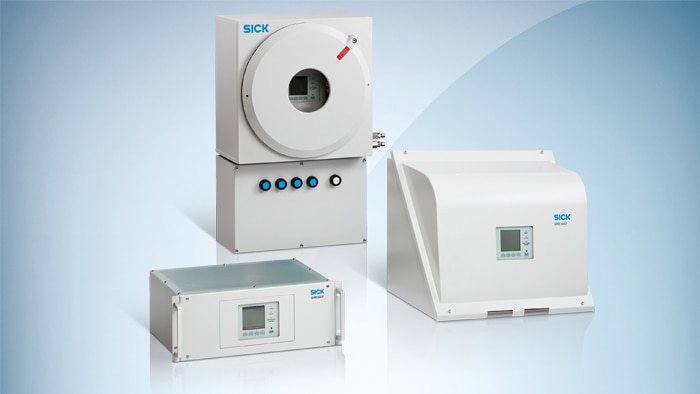It is the material which influences food production like no other: ammonia. As the main component in the production of nitrogen fertilizers, ammonia is used in a wide range of industrial processes due to its physical and chemical properties. The basis for the production of ammonia on an industrial scale is hydrogen. Since hydrogen typically does not occur as a natural resource, it is generated on a large scale by various chemical processes.
Basis hydrogen: versatile gas analysis in the production of ammonia
The most important processes for hydrogen generation are steam reforming of light hydrocarbons, partial oxidation of hydrocarbons or carbon and water electrolysis. Steam reforming of natural gas is the dominating technology with about 90% of worldwide production of hydrogen. SICK offers customized gas analysis for process and emission monitoring for industrial processes related to ammonia production.
Controlled world growth
As a starting material for a wide range of products such as fertilizer and nitric acid, ammonia is one of the most produced chemicals in the world. More than 150 million tons were produced in 2018 alone. The Haber-Bosch process for ammonia synthesis is considered as one of the most important chemical processes of the 20th century and has a huge effect on the world population due to its widespread use in fertilizer production. The hydrogen needed for ammonia synthesis is produced and purified in several steps as described above in the steam reforming process.
The hydrogen then reacts with atmospheric nitrogen at high pressure and temperature and becomes ammonia. The high reaction speed and material throughput require efficient process control in every step. Continuously measuring extractive gas analyzers can monitor H2, CH4, CO, CO2 and NH3 and offer significant advantages compared to gas chromatographs thanks to their robustness and ease of use. In the ammonia synthesis, CO and CO2 would function as catalyst poison and cause salt formation. That is why they must be removed before the synthesis step. To minimize disruptions by CO and CO2, even very small amounts in the ppm range must be detected.
“Bread from air” – fertilizer from nitrogen
Nitrogen is one of the bases for the growth of plants. The nitrogen contained in the air we breathe cannot be absorbed by plants. Through ammonia synthesis and the fertilizer created in this way, nitrogen is offered to plants in a form in which they can use it as nutrient. The “bread from air” comparison was created during the discovery of the Haber-Bosch process about 100 years ago. And interestingly, the property of “air”, or more accurately the composition of the gases, still plays a decisive role today in the successful process of ammonia production. Gas analysis systems with a modular design are extremely useful for monitoring and guaranteeing this condition.
For example, SICK’s product range includes a special solution for monitoring the efficiency of the steam reformer and control of the downstream shift converter by measuring methane (CH4) and carbon monoxide (CO). This solution can be implemented by SICK with the S700 or GMS800 extractive gas analyzers from SICK. However, there are different licenses available for the industrial production of ammonia with various technologies. Which license is selected also depends on the raw materials used as well as the surrounding conditions. In principle, the solution described above can be transferred to other licenses for ammonia synthesis based on steam reforming. Customer and system-specific adaptations required for this measurement can be implemented by SICK.
The highest level of gas analysis
SICK offers analysis solutions for the entire ammonia synthesis process and some subsequent processes. Experts from SICK support in the selection of the right products for the respective application. The S700 and GMS800 therefore build the foundation for customized gas analysis for process and emission monitoring for hydrogen and ammonia production. All relevant gas components for this process can be measured both with the S700 and the GMS800 – with up to three or even six different analysis modules.
Different housing types are available depending on the measuring task, location of use and ambient conditions. This also includes a wall housing with ATEX certification for explosion-hazardous areas which is suited for industrial environments. Equipped with modern software, the GMS800 also features all the interfaces required for remote monitoring via networks through to the connection to a distributed control system.
Read more:
Gas and dust measurement: limiting explosions
New field: SICK reduces process costs for one of the world’s largest fertilizer manufacturers
Safe technology for measuring the concentration of hydrocarbons





